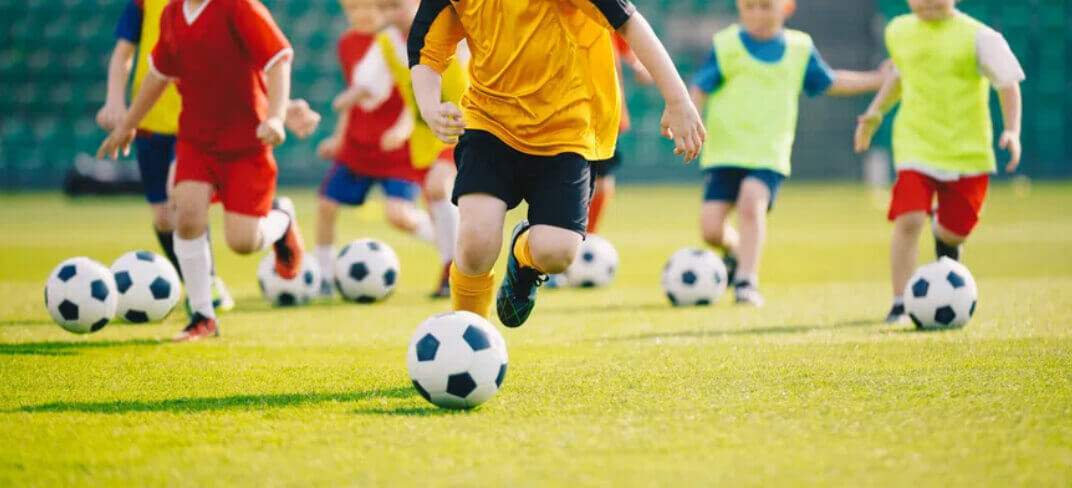How To Protect Our Young Athletes in Modern Sport

Note: Adapted from SSC video transcripts
In today's sports environment, protecting young athletes is paramount. Tommy Mooney, Lead Strength & Conditioning Coach at UPMC Sports Surgery Clinic, discusses a comprehensive approach that incorporates multi-sport participation, balanced training loads, and strength and conditioning.
The video outlines a three-pronged model to significantly enhance the health and development of young athletes.
Tommy Mooney
UPMC is not responsible for the operation of external sites. YouTube (Google) may use your data for their own purposes, more information is available from Google in their Privacy Policy.
The Importance of Multi-Sport Participation
Encouraging children to participate in multiple sports can significantly enhance their movement vocabulary. Exposure to various sports helps young athletes develop a broad range of skills and physical capabilities, which can ultimately benefit their primary sport. Engaging in diverse physical activities reduces the risk of burnout and keeps children enthusiastic about sports.
For example, consider two young athletes: Jack, who focuses solely on tennis, and Jill, who participates in gymnastics, tennis, and athletics. While it is impossible to predict which child will have a longer or more successful career, research suggests that children like Jill, who engage in multiple sports, typically develop a wider range of skills and are less likely to experience burnout. Multi-sport participation also reduces the risk of overuse injuries and enhances cognitive skills and decision-making abilities.
Balancing Training Load and Rest
Finding the right balance between training load and rest is crucial for the well-being of young athletes. Overtraining can lead to injuries and burnout, while insufficient activity can increase the risk of injury due to lack of physical preparedness. Striking the right balance ensures that young athletes remain healthy and perform at their best.
Studies indicate that children today are generally less physically active compared to previous generations. This decrease in physical activity has led to weaker muscles and lower levels of physical literacy. Incorporating structured physical activities like strength and conditioning can be highly beneficial. However, monitoring training loads and ensuring adequate rest is essential, especially after periods of inactivity, such as during the COVID-19 pandemic. Sudden increases in training intensity can elevate injury risks, making it vital to maintain a balanced approach.
The Role of Strength and Conditioning
Strength and conditioning is vital for enhancing athletic performance and reducing injury risks. Properly supervised strength and conditioning programs are safe and can lead to significant benefits, such as increased strength, power, bone density, balance, and coordination.
Strength and conditioning are not limited to gym-based activities; they also encompass speed and agility training and muscular endurance. A well-rounded program might include exercises like crawling, jumping, lifting, and squatting, all performed in a safe and enjoyable environment. As children grow older, these exercises can be progressed to more challenging and heavier loads.
Addressing Misconceptions and Safety Concerns
Several misconceptions surround youth strength training, such as concerns about stunted growth or decreased speed. However, research demonstrates that strength training is safe for young athletes and does not hinder growth. In fact, it can improve speed and overall athletic performance. Injuries in strength training are rare and usually result from poor technique, excessive loading, or lack of supervision.
Implementing a comprehensive strength and conditioning program, led by qualified professionals, can significantly reduce injury risks. Data from elite soccer academies show that world-class strength and conditioning programs can decrease the incidence of injuries.
Guidelines for Parents and Coaches
For parents and coaches, the following guidelines ensure the safe and effective development of young athletes:
- Encourage participation in Physical Education (PE) to expose children to a variety of sports and skills.
- Promote outdoor play and social interaction with peers.
- Ensure at least one rest day per week to allow for recovery.
- Encourage playing different sports during the off-season to diversify skills and prevent burnout.
- Communicate with coaches across different sports to manage overall training load.
- Introduce resistance training under proper supervision to enhance physical development.
- Emphasise having fun, as enjoyment is key to long-term participation and benefits.
By following these guidelines and promoting a balanced approach to sports and physical activity, young athletes can be protected and supported in their long-term health and success in sports.
Learn more about UPMC Sports Medicine Services. UPMC is proud to be the official healthcare partner of the GAA and the GPA.
